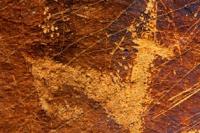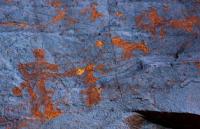You are here
Сave drawing Eshkiolmes Turkic Time.


Excursions Tours Petroglyphs in Kazakhstan.
“The universe contains many planets which make it what it is – a unified system. In addition, our bodies contain many organs, and each part is congruent to a planet in our solar system. The universe we see out our eyes is a mirror of what is within us. This is what God meant by making man in his image. We are all made as a reflection of God and that reflection of him is within us. Furthermore, not only are all religions connected to the same Truth, or Cosmic Heart, but this concept is also mirrored in the pantheons of ancient religions, where each of the many gods simply represented one set of characteristics of the ONE. And in all cases, these many gods symbolized the planets, therefore mimicking the different parts of the universe and the ONE God’s many mirrors (He Who is All). The structure behind all polytheistic religions of the past and present is one and the same. They are all built on the same foundation as Nature”
Suzy Kassem.
Cave paintings and Petroglyphs of Kazakhstan.
Petroglyphs of ancient Turkic time are always met in the most ancient sanctuaries. In Semirechie the medieval pictures were cut usually on the tops of hillocks, as the rule, out of the main sacral zone of the most ancient sanctuaries.
But the small quantity of bronze epoch scenes and sakae time had been renewed by medieval masters; sometimes near the most ancient petroglyphs on free plain surfaces were cut one or two medieval pictures.
Some pictures of medieval epoch are rather separate from the total mass of petroglyphs by the typological features. Pictures of riders with weapon at the moment of fight or hunting dominate among the subjects of ancient Turkic time.
On such scenes the details of weapon, harness and clothes had been worked out comprehensively. Namely the drawn form of weapon let to define the medieval pictures: hard lances and banners, sables, stirrups and saddles with high pommel did not exist at all in the earliest periods and could not be pictured by the artists of sakae time or bronze epoch.
In the mountains Eshkiolmes the wide use of graving technique let ancient masters to picture even the smallest details such as the form of arrows' edges, compound bows and forms of quivers - these features also let to separate the medieval pictures from another epoch.
But not all ancient Turkic pictures are possible to define so easily. It is essentially difficult to define the chronology of animal figures, as the Turkic artists used the same methods as were used by ancient masters: cutting, graving, stratching and combination of all these methods.
Sometimes medieval engraving had been created as imitation of sakae «animal» style or separate subjects of the late bronze epoch. The specific difficulty the researches feel during definition of chronology and dating of the renewed scenes.
The majority of such renovations of the late bronze epoch's pictures were discovered in the mountains Eshkiolmes. It's not possible to define very often the time of petroglyphs' renovation: in sakae time or ancient Turkic time.
The images which are more specific for sakae rock art such as: deers, wild rams, catlike predators, birds are met among the medieval pictures. These animals are shown sometimes in contours, very often in the poses which are characteristic for sakae epoch as in more ancient periods.
To define medieval pietures in the renewed seenes and subjeets is a success, as the rule, by the specific peculiarities, for example, the horses are shown with the cut mane or pedestrian archer of bronze epoeh is shown with the compound Turkic bow.
The main part of medieval pictures of animals is a sueeess to define mostly thanks to the accompanied subjects as the warriors or hunters with medieval weapon and clothes, or medieval decorations, saddles and harness of horses. In such cases we need to study the character of cutting itself or the analysis of patina on all pictures of composition to define the time of that or another renovations of more ancient pietures.
In the mountains Eshkiolmes the medieval pittures are concentrated mostly in the canyons No .10, 13 and 18. The main part of medieval petroglyphs is the battle seenes. The most expressive pictures or riders' fight with shields, bows and lances are in the canyon No.10.
It is interesting that all 4 riders lean on the direet «knight« stirrups intended for the fight of hard armed riders on lanees. Such seat is characteristic for the European knights, and high pommel of knight's saddle is shown well with one rider.
These pictures are interesting by the manner of fulfillment itself: all figures are stratehed on stone by the thinnest lines and their sizes do not exceed 4 cm. Pictures of round shields are met extremely rare in Central Asia.
In another scene, combined by the techniquc of cutting and engraving three riders with banners are shown. The banners are of one type, all of them are made by techniques of engraving, at the same time the riders and horses are made by deep cut.
On this scene only one rider is shown as leaning on the straight knight's stirrups. The weapon shown in this scene was in use during very long range of time, since the VII up to the XVII c.c.
It is a success to date such pictures thanks to well drawn small details, first of all as edges of arrows. Medieval arrow's edges presented on the rocks Eshkiolmes can be referred to several types:) big plain edges, which got a wide spread among Central Asian nomads in the VI - VIII c.c.) rhombus shaped edges – more late, dated by the X - XI c.c., but they are also met in the developed middle ages, up to the XIV c.c.
The quivers are already widening down for arrows, which were used also in the VI - VIII c.c. and later, in the XIII – XIV c.c. are well seen in some scenes. In many scenes are shown pedestrians in short kaftans, pulled in too tight in tail.
The same dothes had the pedestrians shown in petroglyphs of the ancient Turkic time from Mongolia and Syberia, in Semirechie canyon Taigak, in the mountains Kulzhabasy, in the canyon Karakyr, which are dated by the VI - VIII c.c.
The obviously different technique of putting pictures, different types of edges and different kind of renovation of more early pictures-let to make conclusion that the pictures referred to different periods-from early middle ages (VI - VIII c.c.), up to the late – XIII - XV c.c. arev met among.
Autjority:
The book “The petroglyphs in the Eshkiolmes mountains”. K.M.Baipakov, A.N.Maryyshev, S.A.Potapov, A.A.Gorychev. Almaty, 2005.
Alexander Petrov
photos.







